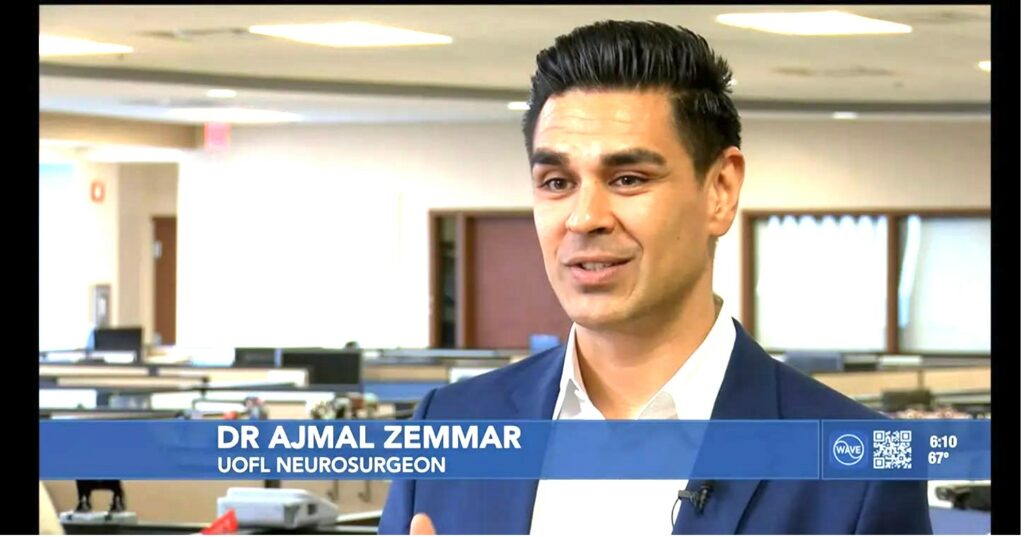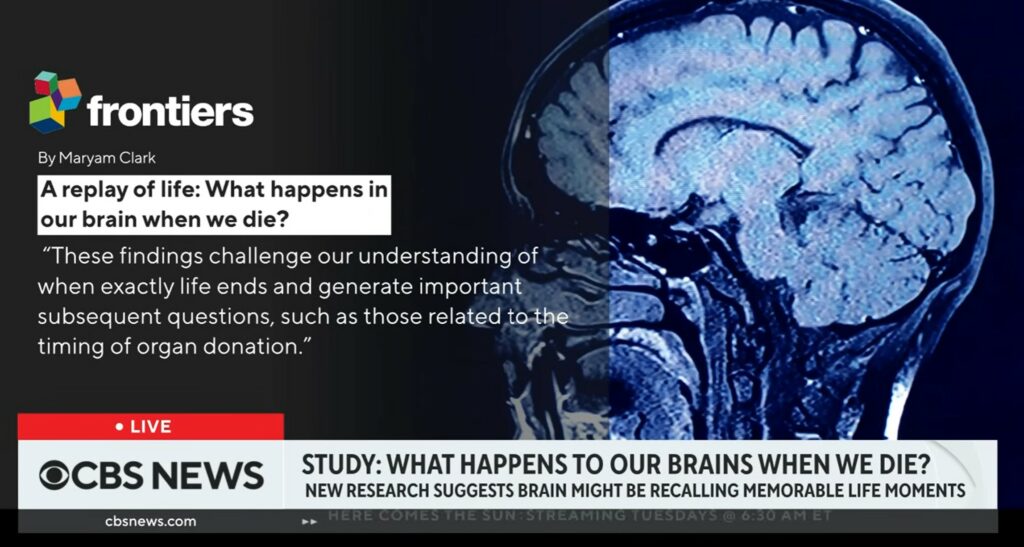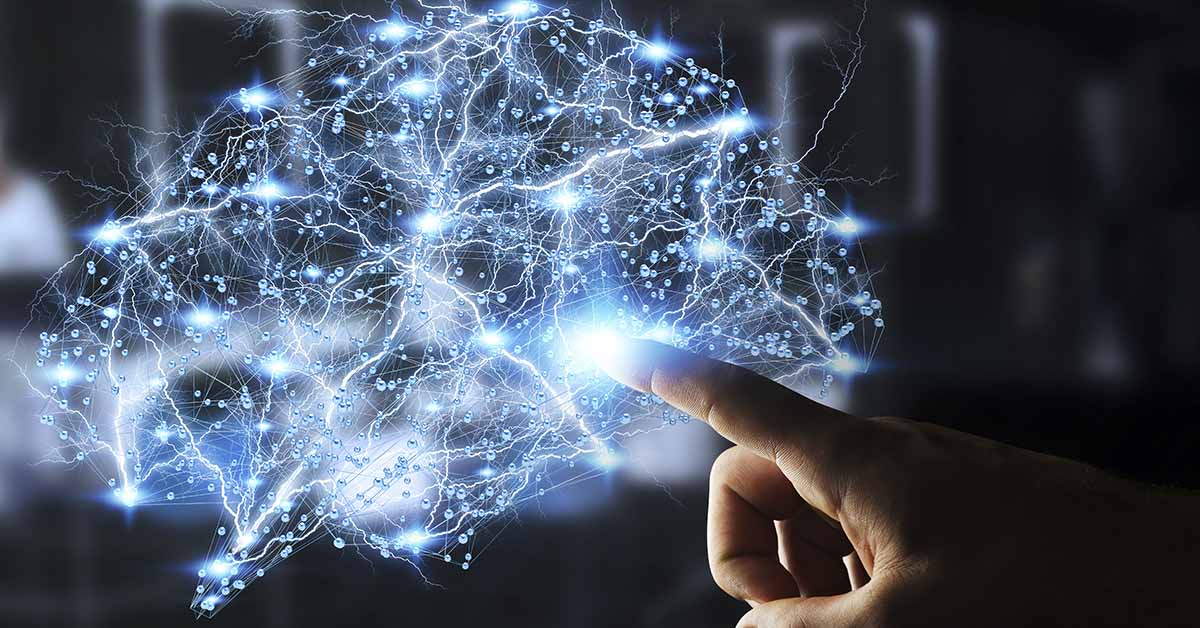What happens in the brain as we die? This age-old question has long fascinated both scientists and philosophers. For generations, humans have speculated about what our minds experience at the very end. Recently, a study conducted by Dr. Ajmal Zemmar has brought us one step closer to an answer. In a remarkable and accidental discovery, his team recorded brain activity at death, capturing data never before seen in a dying human. Published in Frontiers in Aging Neuroscience, the research provides a rare and valuable look into the final neural activity of life. The findings suggest that the brain may remain active longer than we thought, possibly even recalling memories. This new perspective could change how we understand dying and consciousness itself. As researchers explore these revelations, new insights may shift how we perceive not only the end of life, but also the complexity of the mind’s final functions. It’s a scientific turning point with emotional and philosophical implications that ripple through medicine, ethics, and our cultural views of mortality.
The Accidental Discovery
The breakthrough came not from a planned experiment but an unexpected medical event. In 2016, an 87-year-old patient with epilepsy underwent continuous electroencephalography (EEG) monitoring to detect and analyze seizures. During the recording, the patient suddenly experienced a fatal heart attack. This rare occurrence allowed Dr. Zemmar and his team to capture 900 seconds- about 15 minutes- of brain activity surrounding the moment of death. While the goal was not to study dying brain activity, the data provided a unique opportunity. The researchers had never intended to record someone’s final moments, but this accidental event gave them invaluable insight. It was a once-in-a-lifetime chance to observe what the brain does when life ends. This unexpected case has since sparked global scientific interest and speculation about how our brains behave during death. The situation underscored how much we still have to learn about the brain’s functions in extreme circumstances and emphasized the unpredictable paths through which science sometimes advances.
Observing Brain Activity at Death
The data revealed surprising and complex patterns in the dying brain. As the patient’s heart stopped, researchers observed activity across multiple brainwave frequencies, gamma, delta, theta, alpha, and beta. Gamma waves were of particular interest because they are associated with high-level cognitive functions. These include memory retrieval, concentration, and conscious perception. In the 30 seconds before and after the heart stopped beating, the brain continued to show organized and synchronized patterns. This level of activity, especially in gamma waves, was unexpected. It challenges previous assumptions that brain function halts immediately after cardiac arrest. Instead, the findings suggest that the brain may remain aware for a short time. Understanding this could transform how we define death and measure brain function at life’s end. The possibility that the mind stays active even briefly after the heart stops invites us to revisit our understanding of consciousness and pushes the boundaries of neuroscience into uncharted and fascinating territory.
Read More: Simulation Reveals What the Brain Experiences in the First 10 Minutes After Death
Implications for Near-Death Experiences
The study offers a possible scientific explanation for the vivid recollections reported during near-death experiences. Many people who have come close to death describe seeing their life flash before their eyes. Others report profound emotional or spiritual moments. The gamma wave patterns seen in the study support the idea that the brain might replay significant memories at the time of death. Dr. Zemmar theorizes that this activity could represent a final life review- a last conscious effort by the brain to process experiences. If true, these findings could offer comfort to those fearing death. Knowing that our last moments might involve meaningful memories adds depth to how we perceive dying. Though speculative, the study adds a layer of understanding to the emotional and psychological experiences reported by near-death survivors around the world. These insights, though based on limited data, hint at a shared cognitive phenomenon that may bridge the gap between clinical science and the deeply personal experience of death.

Challenging the Definition of Death
This study may redefine when death truly occurs. Traditionally, death is marked by the heart stopping and breathing ceasing. However, the discovery of continued brain activity after cardiac arrest complicates that definition. If the brain remains active after the heart stops, we must ask: when does life actually end? This has major implications for medical practices, especially in organ donation. Current protocols often rely on the cessation of heart activity to determine death. But if the brain is still firing, even briefly, should those definitions change? The study also raises ethical questions. How should doctors proceed with end-of-life care if cognitive activity lingers? It’s clear that this research may influence policy, medicine, and public perceptions. The boundary between life and death may not be as clear-cut as once believed. As medicine evolves, these discoveries call for thoughtful debate, legal adjustments, and compassionate communication about what it means to be truly alive or truly gone.
Limitations and Considerations
While the findings are groundbreaking, the study comes with important caveats. The research was based on a single case study, which limits how much we can generalize. The patient had epilepsy and brain swelling, both conditions that may affect brainwave activity. These factors could have influenced the patterns observed. Therefore, it’s uncertain whether similar activity would appear in healthy brains. Also, the stress of dying could alter brain behavior in unique ways. Scientists must be cautious before drawing wide conclusions. More research, involving a larger and more diverse group of patients, is essential to verify the results. Despite the limitations, the study remains a valuable starting point. It encourages more exploration into brain activity at death and sets the stage for future investigation. Like many scientific firsts, it provides a launchpad rather than a destination- opening doors for collaboration across neuroscience, medicine, and ethics in pursuit of answers to some of life’s biggest questions.
Supporting Evidence from Animal Studies
This isn’t the first time researchers have noticed unusual brain activity near death. In 2013, a study on rats found similar patterns of gamma brainwaves at the moment of death. In that experiment, scientists observed a surge of high-frequency brain activity immediately following cardiac arrest. The results suggest that this phenomenon may not be unique to humans. Instead, it could be a biological response common across species. These animal studies lend credibility to Dr. Zemmar’s human-based findings. If rats show comparable patterns, it supports the idea of a universal brain mechanism at life’s end. Such consistency points toward a deeper biological explanation. These findings bridge gaps between human and animal neuroscience. They also offer more avenues for controlled, ethical research. Understanding the dying brain might now be within reach, thanks to studies in both people and animals. As researchers explore more animal models, they could find evolutionary clues that explain why this final burst of brain activity exists.

Philosophical and Emotional Reflections
Beyond science, the study prompts reflection on death’s emotional and spiritual aspects. Dr. Zemmar has expressed hope that his findings may comfort people facing death or grieving a loss. The idea that the brain may replay cherished memories offers a sense of peace. It suggests that our final thoughts could be positive, filled with meaningful moments. At the same time, he urges caution. Not all memories are happy, and each brain is unique. We should avoid assuming that everyone experiences death the same way. Still, the potential for a final life review resonates deeply with cultural beliefs and stories. It may bridge science with spirituality in unexpected ways. These insights could shape how we talk about death with loved ones and how we emotionally prepare for life’s final chapter. For many, knowing that consciousness might persist briefly offers comfort- a small light in what has long felt like a dark, unknowable mystery.
Future Research Directions
The study has opened the door to new scientific exploration. Researchers now have a starting point for investigating the brain’s final moments. Future studies could include more patients, different medical conditions, and varied recording methods. Technological advances in EEG and brain imaging will help. Scientists may uncover patterns that tell us more about consciousness and dying. The findings could also reshape medical protocols. For example, better understanding brain activity at death could inform organ donation timing. It may also influence how doctors manage palliative care. Ethical questions will arise, too. If brain activity continues after clinical death, we may need to redefine our legal and moral boundaries. Dr. Zemmar’s work has only scratched the surface. The road ahead is full of important questions and potentially transformative answers. As the scientific community begins to follow up on this case, we may one day fully understand what happens in the brain when life comes to an end.
Read More: Dead for Four Years, This Composer Is Releasing New Music—Thanks to a Lab-Grown Brain
Conclusion
Capturing brain activity at death has changed how we think about dying. This unprecedented recording shows that our brains may remain active after the heart stops. It reveals patterns linked to memory and consciousness. These findings challenge long-held beliefs and open new questions. When does life really end? What do we think and feel in our final seconds? The answers could alter medical, ethical, and personal approaches to death. While based on one case, the study encourages more research. It invites us to reconsider how we define and approach the end of life. For now, it offers a hopeful notion- that our last moments might include a farewell tour of life’s most meaningful events. The science of dying is still in its early stages, but it has never looked more fascinating or profound. What started as a tragic accident has become a window into the most mysterious transition of all: the passage from life into whatever comes next.

